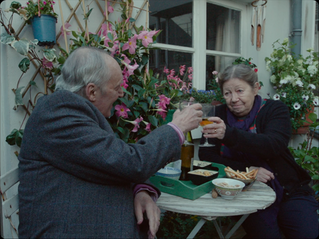Sisyphus
- Jonny Rogers
- Aug 21, 2021
- 3 min read
Updated: Sep 6, 2021
Marcell Jankovics, 1974

As a punishment for attempting to fool the gods and cheat death twice, Sisyphus, the King of Corinth, was cursed to push a boulder up a hill for eternity, only for it to roll down every time he approached the peak. This image – of a man suspended in endless labour, with no hope for relief – has resonated with many throughout history; one might find parallels in agricultural cycles, relentless working schedules, and even celestial movements.
It is impossible to talk about Sisyphus without mentioning Albert Camus, who famously retold the story as a metaphor for the existential condition: namely, the tension that arises from the human need to experience meaning, and the apparent inability to find this with any certainty. The horror of Sisyphus’s curse, Camus reasons, is not found simply in the immensity of his labour, but in his awareness of its futility. The only way our hero can rebel against or overcome his tragic fate is to find happiness precisely in his struggle.
In 1974, Hungarian animator Marcell Jankovics produced his own interpretation of the classical story. In the two-minute film, the hero’s ink-drawn body contorts and compresses under the weight of the boulder, in some frames reduced to simple brush strokes, in others growing into a pulsating mass of muscle. This reductionist impression of immense labour is accompanied by recordings of Jankovics’ desperate screaming, broken only by periods of strained breathing. The boulder itself appears to grow larger with every revolution, and the body is soon dwarfed by the object before him.
As Sisyphus finally reaches the top of the mountain, he falls to his knees in exhaustion, even melting, temporarily, into the ground he is standing on. The sequence then pulls back to reveal that this mountain is made of countless identical boulders. There is a brief moment of respite, before our hero leaps to his feet and returns to repeat his task.
Despite its relative obscurity, Sisyphus has made two prominent appearances on public television: once, in 1976, when it was nominated for the Best Short Animated Film at the 48th Academy awards; and again in 2008, when it was featured in a Super Bowl advert for GMC’s (failed) Yukon Hybrid.
In the latter, Jankovics’ animation is muted and partnered instead with a simple piano score, as the narrator utters:
“Why push? Why change? Why grow? Why dream? Questions you don’t have to ask yourself if you never say, ‘It’s good enough.’ If you never say, ‘It can’t be done.’ When you never say never.”
Of course, only a multinational conglomerate could think to transform a story concerned with the futility of inconsequential labour into a sports-movie-locker-room-style monologue about the value of an uncompromising work ethic. Intentionally or otherwise, this advert appears to present the task of selling a new vehicle to an over-saturated market as a fruitless project, and one that is doomed to eternal repetition.
If the advert does highlight one thing, however, it’s that the sounds of Jankovics’ screaming are integral to his interpretation of the myth. This is where I think Jankovics improves upon Camus; his Sisyphus is not that of the pipe-smoking philosopher, deliberating on his curse as if it were interchangeable with any other task, but that of a man pushed to extreme emotional and physical exhaustion.
Perhaps Jankovics intends to present animation, itself, as a Sisyphean task: after all, the moment one frame is completed, the animator has to turn to a blank page to continue the sequence. This might go some way to explain why the boulder in Sisyphus remains in stasis at the top of the hill; his punishment is one of eternal accumulation, rather than repetition.
Jankovics, who passed away in May this year, was working on The Tragedy of Man for over 23 years, with each segment of the film being funded separately before its release in 2011. I often can’t help but wonder why animators put so much blood, sweat and ink into their work, especially when commercial systems are often so resistant to experimentation. Perhaps, to paraphrase Camus, one must simply imagine the animator happy.








Comments